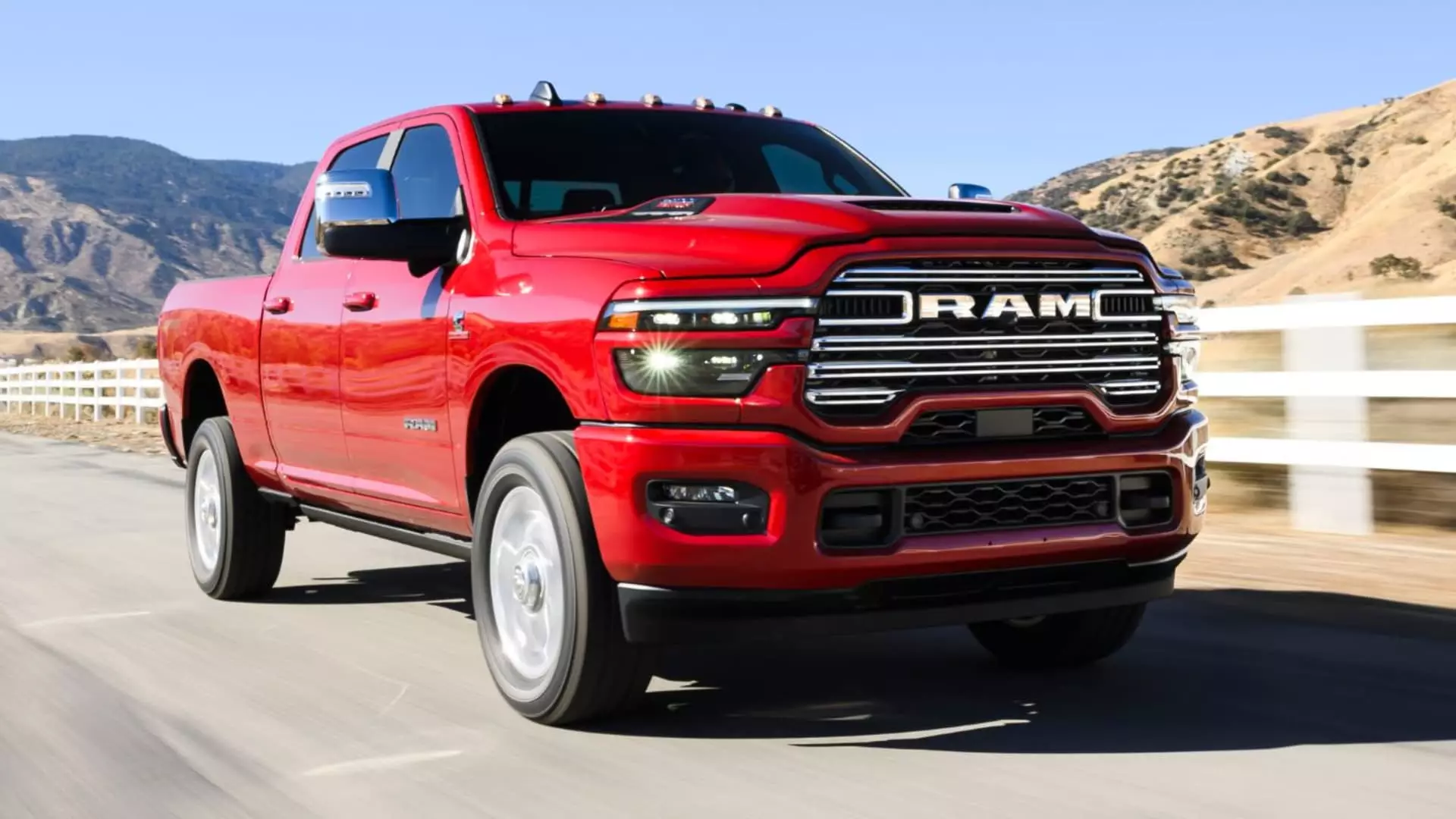Stellantis is making a bold move with the complete redesign of its Ram heavy-duty truck series, including the Ram 2500 and 3500 models. This facelift comes at a critical junction for the brand, as it seeks to recover from three consecutive years of dwindling sales. The refreshed trucks boast significant enhancements both inside and out, aimed at improving customer appeal and boosting competitiveness in a challenging market.
At the core of these updates is a new 6.7-liter Cummins turbo diesel engine delivering an impressive 430 horsepower alongside a remarkable 1,075 foot-pounds of torque. Such power makes it an attractive option for those frequently engaging in towing and hauling tasks, crucial for many heavy-duty truck customers. Moreover, the introduction of this powerhouse engine is coupled with a competitive pricing strategy, starting at approximately $47,560, which is about $2,300 above the current models.
Timing is Key
The rollout of these new models is particularly timely, arriving at American dealerships by the first quarter of the year. However, Stellantis’s timeline was not without its hiccups. The brand faced challenges with the launch of its smaller counterpart, the Ram 1500, which was significantly delayed. Ram CEO Tim Kuniskis candidly acknowledged these delays, stating, “It’s been super delayed, let’s be honest.” His acknowledgment of internal setbacks reflects a commitment to transparency, which is essential in rebuilding trust with consumers.
The company’s predicament is stark when viewed through the lens of competition. Ram witnessed a staggering 19% decline in sales over the past year, a situation further exacerbated by a 16% drop specifically in Ram pickups. Compared to competitors like Ford and Chevrolet, who managed to maintain stable sales figures, Ram’s performance highlights the pressing need for a robust recovery strategy.
The Diesel Engine Advantage
One of the critical aspects of the Ram Heavy Duty lineup is the choice of engine options. While the 6.7-liter Cummins turbo diesel engine stands out, the 6.4-liter Hemi V8 also demands attention with its respectable output of 405 horsepower and 429 foot-pounds of torque. The decision to offer two distinct engine types allows Ram to cater to a wide audience, from daily drivers to professionals in need of serious towing capabilities.
Moreover, the lineup encompasses various trims such as the Tradesman, Big Horn/Lone Star, Laramie, Rebel, and Limited models, which gives customers plenty of options to suit their individual needs and preferences. These tactical decisions reflect a strategic approach to appealing to a diverse market segment.
With the redesigned heavy-duty trucks, Ram aims not only to gain back lost market share but also to revitalize its brand amidst stiff competition. The success of these models will depend on effective execution and overcoming earlier production and rollout challenges. As the world of trucks evolves, Stellantis’s commitment to innovation and responsiveness to market demands is crucial for restoring Ram’s status in American automotive history. The upcoming months will be telling, as both consumers and industry observers watch how Ram rises to meet the challenge.

